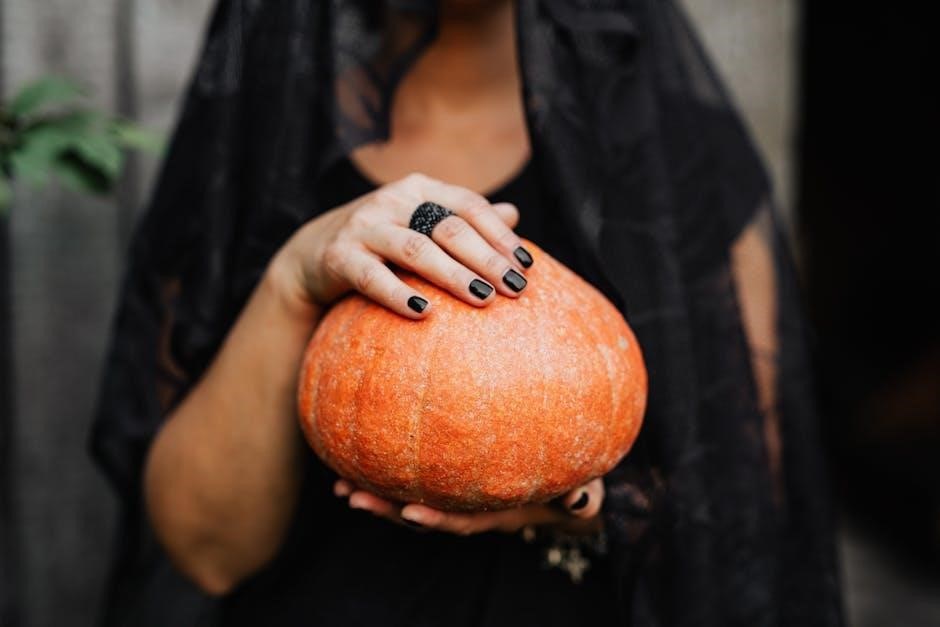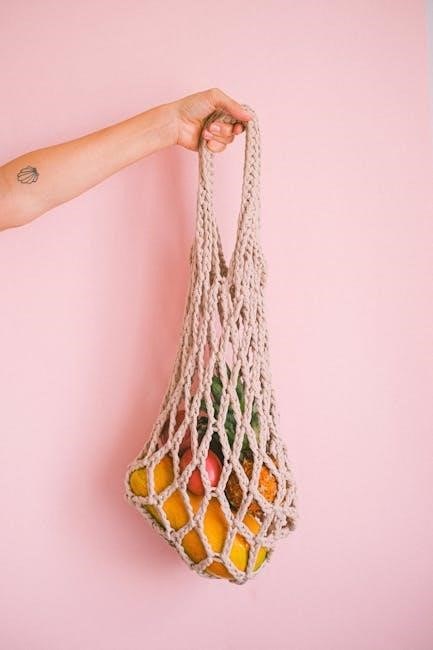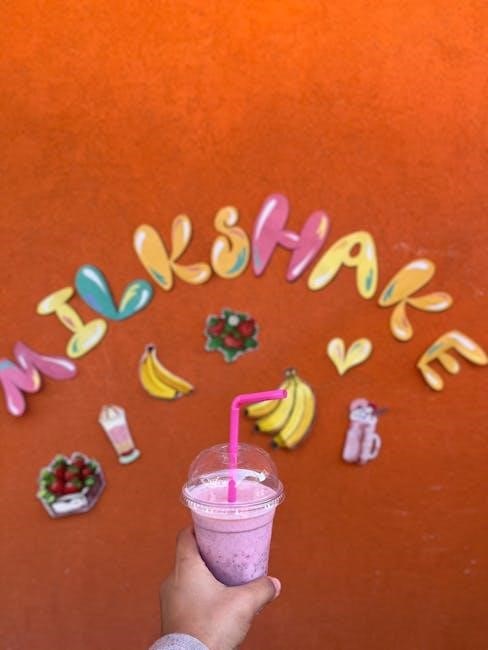
all hand mudras pdf
Hand mudras are ancient gestures originating from Eastern traditions, used to balance energy, enhance well-being, and deepen meditation. They involve specific finger placements believed to influence the body’s vital energy, promoting physical, mental, and spiritual harmony. Widely practiced in yoga, Ayurveda, and Buddhism, mudras offer a holistic approach to health and self-awareness, making them a powerful tool for modern wellness practices.
1.1 Definition and Origin of Mudras
Mudras are symbolic hand gestures with roots in ancient Hindu, Buddhist, and yogic traditions. The term “mudra” translates to “seal” or “gesture,” representing a way to channel and balance life force (prana) within the body. Originating thousands of years ago, mudras were used in meditation and rituals to connect the physical and spiritual realms. Each gesture is believed to influence the flow of energy, fostering harmony and well-being by aligning the body, mind, and spirit.
1.2 Historical Significance of Hand Mudras
Hand mudras have deep roots in ancient Hindu, Buddhist, and yogic traditions, dating back thousands of years. These gestures were integral to spiritual practices, rituals, and meditation, believed to balance life force and connect the physical and divine. In Hinduism, mudras symbolized divine powers, while in Buddhism, they represented enlightenment and compassion. Their historical significance lies in their role as tools for healing, self-realization, and spiritual growth, passed down through generations as sacred practices for holistic well-being.
1.3 Importance of Mudras in Yoga and Meditation
Mudras are integral to yoga and meditation, serving as powerful tools to channel and balance energy. By manipulating finger positions, they regulate life force, enhance focus, and deepen meditative states. Mudras harmonize mind, body, and spirit, fostering emotional stability and physical health. Their practice aids in quieting the mind, improving circulation, and awakening inner consciousness, making them essential for holistic well-being and spiritual growth in both yoga and meditation practices.

The Science Behind Hand Mudras
Hand mudras work by manipulating energy flow through finger placements, balancing the body’s elements and harmonizing prana. This ancient practice influences physical and mental well-being.
2.1 Connection Between Fingers and Elements
The fingers are linked to the five elements: thumb (fire), index (air), middle (ether), ring (earth), and pinky (water). Each element influences the body’s energy flow. Balancing these elements through mudras harmonizes the body’s vital energy, or prana, promoting health and well-being. This connection is rooted in ancient Ayurvedic principles, where each finger’s pressure points correspond to specific energy pathways, or nadis, affecting overall health and mental clarity.
2.2 The Role of Prana and Energy Flow
Prana, the vital life force, flows through the body via energy pathways called nadis. Hand mudras regulate this flow by pressing specific points, balancing the energy. This practice harmonizes the body’s subtle energies, enhancing well-being and mental clarity. By modulating prana, mudras help restore equilibrium, addressing physical and emotional imbalances. This ancient technique is rooted in the belief that controlled energy flow fosters health and spiritual growth, making it a cornerstone of holistic healing practices.
2.3 How Mudras Affect the Body and Mind
Hand mudras influence the body and mind by balancing the flow of prana, or life energy, and harmonizing the elements within. They stimulate specific energy points, enhancing physical and mental well-being. Regular practice can improve circulation, boost immunity, and reduce stress. Mentally, mudras foster calmness, clarity, and emotional stability. By aligning the body’s energy, they promote holistic health and spiritual growth, offering a natural way to restore equilibrium and enhance overall vitality.

Types of Hand Mudras
Hand mudras vary widely, including Hasta Mudras, Buddha Mudras, and healing mudras for specific ailments. Each type serves unique purposes, from promoting health to enhancing meditation and spiritual growth.
3.1 Hasta Mudras: Hand Gestures in Yoga
Hasta Mudras are fundamental hand gestures in yoga, regulating the flow of prana (life energy) by manipulating finger positions. They enhance physical and mental well-being, aiding in meditation and balancing the body’s elements. Common examples include Gyan Mudra, Prana Mudra, and Chin Mudra. Regular practice of Hasta Mudras is believed to harmonize the body’s energy, promoting health and spiritual growth through targeted finger placements and breathing techniques.

3.2 Buddha Mudras: Sacred Hand Gestures in Buddhism
Buddha Mudras are sacred hand gestures in Buddhism, often depicted in statues and art, symbolizing spiritual principles and emotions. The Abhaya Mudra represents fearlessness, Varada Mudra signifies compassion, and Dhyan Mudra embodies meditation. These gestures are used in Buddhist rituals and meditation to convey inner peace, wisdom, and enlightenment. They reflect the Buddha’s teachings, serving as powerful tools for spiritual growth and mindfulness, deeply rooted in Buddhist tradition and philosophy.
3.3 Healing Mudras for Specific Ailments
Healing mudras are specifically designed to address various health conditions, offering natural remedies through precise hand gestures. Apan Vayu Mudra aids in heart health, while Prana Mudra boosts energy and immunity. Gyan Mudra enhances mental clarity, and Vayu Mudra alleviates rheumatism. These mudras target specific energy flows, providing relief from ailments like arthritis, digestive issues, and stress. Regular practice can restore balance and promote overall well-being, making them a valuable complement to traditional healing practices.

Benefits of Practicing Hand Mudras
Practicing hand mudras promotes balance, enhances energy flow, and fosters overall well-being. They empower individuals to harness their inner vitality, leading to improved health and spiritual harmony.
4.1 Physical Benefits: Health and Wellness
Hand mudras offer numerous physical benefits, improving overall health and wellness. They help alleviate arthritis, digestion issues, and headaches while reducing stress and anxiety. Regular practice can lower blood pressure, enhance immune function, and promote energy balance. Mudras also aid in managing chronic pain and improving respiratory health. By harmonizing the body’s vital energy, they foster a state of physical and mental equilibrium, supporting long-term well-being and vitality.
4.2 Mental and Emotional Benefits
Mudras have profound mental and emotional benefits, promoting calmness, clarity, and inner peace. They reduce stress, anxiety, and depression by balancing the mind and emotions. Regular practice enhances focus, concentration, and memory, while fostering emotional resilience and stability. Mudras also help in managing anger and frustration, encouraging a sense of calm and positivity. By harmonizing the flow of prana, they promote mental equilibrium, leading to a more balanced and joyful life.
4.3 Spiritual Benefits: Connecting to Inner Energy
Hand mudras offer deep spiritual benefits by connecting practitioners to their inner energy and higher consciousness. They facilitate meditation, enhance intuition, and promote a sense of unity with the universe. Specific mudras, like Gyan and Chin Mudra, are believed to awaken spiritual awareness and guide toward self-realization. By balancing prana, mudras help quiet the mind, allowing individuals to access deeper states of consciousness and experience spiritual growth, making them a powerful tool for inner transformation and enlightenment.
Popular Hand Mudras and Their Uses
Popular hand mudras like Gyan, Prana, and Apan Vayu are widely practiced for their specific benefits. They promote health, balance, and spiritual growth, enhancing overall well-being naturally.
5.1 Gyan Mudra: The Gesture of Knowledge
Gyan Mudra, or the Gesture of Knowledge, is a powerful hand mudra formed by joining the thumb and index finger. This gesture is believed to enhance memory, concentration, and mental clarity. It is also known to reduce stress and promote a sense of calm. Regular practice of Gyan Mudra is said to improve intellectual abilities and spiritual awareness. It is often recommended for students, professionals, and anyone seeking mental clarity. This mudra is ideally performed during meditation for best results.
5.2 Prana Mudra: The Gesture of Life Force
Prana Mudra, the Gesture of Life Force, is a powerful mudra that enhances vitality and overall well-being. It is formed by touching the thumb to the ring and pinky fingers while extending the other fingers. This gesture is believed to activate the life force energy, improving energy levels, boosting immunity, and promoting emotional balance. Regular practice of Prana Mudra is said to rejuvenate the body and mind, making it ideal for those seeking to enhance their physical and mental health. It is often recommended for practices aimed at increasing vitality and reducing stress.

5.3 Apan Vayu Mudra: The Gesture for Heart Health
Apan Vayu Mudra, or the Gesture for Heart Health, is a powerful mudra beneficial for cardiovascular well-being. It is performed by touching the thumb to the index and middle fingers while extending the ring and pinky fingers. This gesture is said to balance the heart chakra, improve circulation, and reduce stress. Regular practice is believed to enhance heart health, calm the mind, and provide relief during heart-related emergencies. It is often recommended for those seeking to promote cardiac wellness and overall vitality.

How to Practice Hand Mudras
To practice hand mudras, sit comfortably, form the gesture with intention, and hold it for 5-45 minutes. Focus on breath, align fingers precisely, and maintain mindfulness for optimal benefits.
6.1 Step-by-Step Guide to Performing Mudras
To perform hand mudras, sit comfortably with palms together. Gently form the desired gesture, ensuring fingers align correctly. Hold for 5-45 minutes, focusing on breath. For example, Gyan Mudra involves thumb and index finger contact, enhancing knowledge retention. Prana Mudra energizes the body, while Apan Vayu Mudra supports heart health. Practice with intention, relax shoulders, and maintain steady breathing for optimal benefits. End slowly to seal the energy.
Beginners can start with simple mudras like Namaskar or Anjali Mudra, gradually progressing to more complex gestures. Consistency is key for experiencing physical, mental, and spiritual improvements.
6.2 Best Times and Duration for Practice
Practice hand mudras during calm periods, such as early morning or evening, to enhance their effectiveness. Ideal duration varies from 5 to 45 minutes, depending on the mudra and personal comfort. For health benefits, consistency is key—aim for daily practice. Adjust timing and length based on your schedule and energy levels. Start with shorter sessions and gradually increase as you become more comfortable with the gestures. Regularity fosters deeper physical, mental, and spiritual alignment.
For best results, practice in a quiet, serene environment.
6.3 Precautions and Contraindications
When practicing hand mudras, it’s essential to approach with mindfulness. Avoid practicing during severe illness, injury, or acute pain without consulting a healthcare professional. Certain mudras may not be suitable for individuals with specific medical conditions, such as high blood pressure or recent fractures. Start slowly, holding each mudra for short periods, and gradually increase duration as comfort allows. Be gentle with finger placements to avoid strain. Proper technique is crucial to avoid discomfort or adverse effects.
Always seek guidance from an experienced practitioner if unsure.
Hand Mudras in Different Cultures
Hand mudras are deeply rooted in Hinduism, Buddhism, yoga, and Ayurveda, symbolizing spiritual and cultural practices. They appear in religious art, rituals, and traditional dances, serving as powerful tools for healing and self-expression across diverse traditions.
7.1 Mudras in Hinduism and Buddhism
In Hinduism and Buddhism, hand mudras hold profound spiritual significance. They are often depicted in religious art, with deities and spiritual leaders using specific gestures to convey divine energy and enlightenment. Buddhist mudras, such as the Dharmachakra and Abhaya, symbolize teachings and protection, while Hindu mudras like the Gyan and Varada embody knowledge and benevolence. These gestures are integral to rituals, meditation, and storytelling, bridging the physical and metaphysical realms.
7.2 Mudras in Yoga and Ayurveda
Hand mudras are integral to Yoga and Ayurveda, serving as tools to balance prana and enhance well-being. In Yoga, mudras like Gyan and Prana are used during meditation and asanas to harmonize energy flow. Ayurveda employs mudras to heal by addressing elemental imbalances and doshas. For instance, Apan Vayu Mudra supports heart health, while Gyan Mudra fosters mental clarity. These practices bridge spiritual and physical health, offering holistic benefits rooted in ancient wisdom.
7.3 Mudras in Dance and Art
Mudras are deeply embedded in traditional Indian dance forms like Bharatanatyam and Kathakali, where they convey emotions and stories. Dancers use hand gestures to depict mythological narratives, making mudras a vital part of artistic expression. In Buddhist and Hindu art, mudras symbolize divine qualities, such as the Varada Mudra for compassion or Abhaya Mudra for protection. These gestures bridge spirituality and aesthetics, transforming hands into a medium of profound communication and cultural preservation.
Resources for Learning Hand Mudras
Discover comprehensive guides, books, and PDFs on hand mudras, offering detailed instructions, diagrams, and benefits. These resources empower learners to master mudras for health and spirituality.
8.1 Recommended Books on Hand Mudras
Explore “Mudra Yoga: Mudras in Your Hands” for detailed insights into hand gestures and their benefits. “The Science Behind Yoga Mudras” offers a deep understanding of energy flow and finger-element connections. “Mudras of India” provides a visual guide to traditional gestures. These books, along with works by Kains Sandra and others, are invaluable resources for mastering hand mudras, ensuring holistic well-being and spiritual growth through ancient practices.
8.2 Online Guides and Videos
Discover comprehensive online guides and videos on hand mudras at platforms like eclecticenergies.com and yogsadhna.com. YouTube channels such as Yoga With Adriene and Kino MacGregor offer detailed tutorials. These resources provide step-by-step instructions, demonstrating proper techniques and durations. Explore videos on specific mudras like Gyan Mudra and Prana Mudra, along with tips for combining them with breathing exercises. These digital tools are perfect for beginners and advanced practitioners seeking to deepen their practice and understanding of hand mudras.
8.3 PDF Downloads for Hand Mudras
Download detailed PDF guides on hand mudras, such as the comprehensive book Mudra Yoga: Mudras Yoga In Your Hands, available on platforms like Google Drive and Archive.org. These PDFs offer in-depth explanations, diagrams, and step-by-step instructions for various mudras. Resources like Complete Hand Mudras and Hand Mudra Sheet 1 provide insights into their benefits, techniques, and applications. These downloadable files are ideal for offline learning, allowing you to explore mudras at your own pace and deepen your practice effectively.

Advanced Techniques in Hand Mudras
Advanced mudra practices integrate breathwork, chakra alignment, and focused intentions to enhance energy flow and consciousness. These techniques amplify the effects of basic mudras for deeper spiritual and physical benefits.
9.1 Combining Mudras with Breathing Techniques
Combining hand mudras with specific breathing techniques enhances their efficacy by synchronizing the flow of prana (life force) and energy in the body. This practice deepens meditation, balances chakras, and amplifies the therapeutic benefits of mudras. For example, Gyan Mudra paired with alternate nostril breathing can improve mental clarity, while Prana Mudra with Ujjayi breath boosts vitality. This synergy fosters a holistic approach to physical, mental, and spiritual well-being, making it a powerful advanced practice.
9.2 Using Mudras for Chakra Balancing
Hand mudras can be effectively used to balance the body’s chakras by aligning finger positions with specific energy centers. Each finger corresponds to an element and chakra, allowing mudras to regulate energy flow. For example, Gyan Mudra (thumb and index finger) targets the third eye chakra, enhancing intuition, while Prana Mudra (thumb, ring, and pinky fingers) supports the heart chakra, fostering emotional harmony. Regular practice promotes spiritual growth and energetic alignment, restoring overall well-being.
9.3 Mudras for Specific Intentions and Goals
Hand mudras can be tailored to manifest specific intentions, such as enhancing confidence, improving health, or fostering emotional balance. For instance, Gyan Mudra is known to boost knowledge and memory, while Varada Mudra cultivates compassion. By aligning finger positions with specific goals, practitioners can channel energy effectively. Regular practice helps in achieving desired outcomes, making mudras a powerful tool for focused personal growth and spiritual evolution. This approach allows individuals to customize their practice for unique life objectives.

Hand mudras are a powerful, ancient practice offering holistic benefits for body, mind, and spirit. Regular practice can enhance well-being, balance energy, and deepen spiritual connection, making them a timeless tool for modern life.
10.1 Final Thoughts on the Power of Mudras
Hand mudras are a profound yet simple practice, offering transformative benefits for health, mental clarity, and spiritual growth. By channeling vital energy through precise finger placements, mudras create balance and harmony in the body. Their timeless wisdom, rooted in ancient traditions, makes them accessible to everyone, regardless of skill level. Regular practice fosters holistic well-being, empowering individuals to harness their inner energy for a fulfilling life.
10.2 Encouragement to Start Practicing
Embrace the ancient wisdom of hand mudras and discover their transformative power. Easy to learn and practice, mudras require minimal time and effort, making them accessible to everyone. Start with simple gestures like Gyan or Prana Mudra to experience their calming effects. Regular practice can enhance your physical, mental, and spiritual well-being. With countless resources available, including detailed PDF guides and instructional videos, there’s never been a better time to begin your mudra journey. Consistency is key—start today and witness the positive changes in your life.
References

Explore detailed guides like “Mudra Yoga: Mudras Yoga In Your Hands” and online resources offering comprehensive PDF downloads for in-depth learning and practice of hand mudras.
11.1 Books and Online Sources
Key resources include books like Mudra Yoga: Mudras Yoga In Your Hands, offering detailed guides, and Mudras of India, which beautifully illustrates sacred hand gestures. Online sources such as eclecticenergies.com and yogsadhna.com provide comprehensive PDF downloads, explaining the meaning, methods, and benefits of various mudras. These resources are invaluable for deepening knowledge and practice, ensuring a holistic understanding of hand mudras and their applications in health, meditation, and spiritual growth.
11.2 Expert Opinions and Research
Experts emphasize the profound impact of hand mudras on physical and mental well-being. Research highlights their role in balancing energy, reducing stress, and enhancing focus. Studies by practitioners like Ryzhakova and spiritual leaders reveal mudras’ cultural significance and therapeutic benefits. Many experts recommend regular practice for overall health and mindfulness, supported by scientific evidence showing measurable improvements in emotional and physical states, making mudras a valuable, evidence-backed holistic practice.
11.3 Additional Resources for Further Study
For deeper exploration, numerous resources are available, including books like “Mudra Yoga” and “Mantras and Mudras.” Online guides, such as those from Eclectic Energies and Yogsadhna, offer detailed explanations. PDF downloads like “Mudras for a Healthy Life” and “Complete Hand Mudras” provide comprehensive insights. Websites and YouTube channels dedicated to yoga and Ayurveda also feature tutorials and expert demonstrations, making it easy to dive deeper into the world of hand mudras and their benefits.